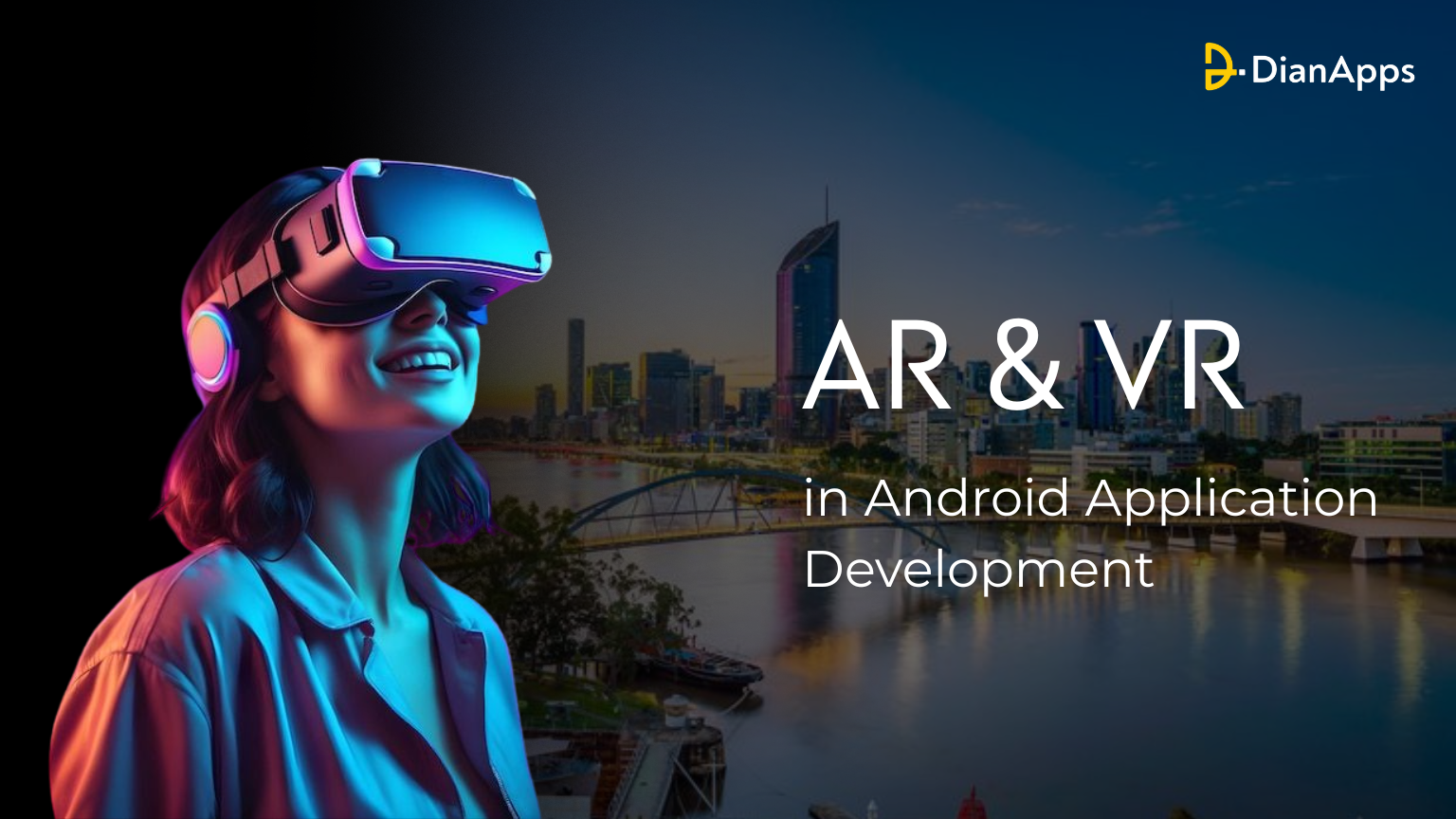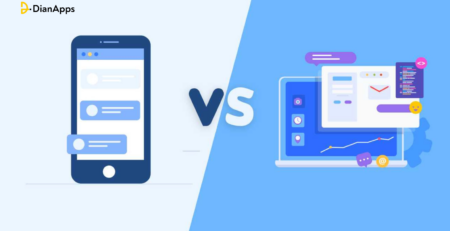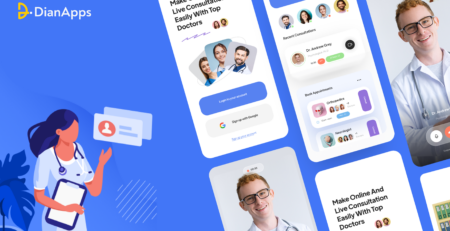AR & VR in Android Application Development: The Next Big Opportunity for Australian Businesses
Remember a time when you really wanted to try on a pair of sunglasses without stepping into a store? Or visualized a new kitchen layout right from your smartphone? Welcome to an era where this no longer remains an imagination, but it has become a reality.
The emergence of Augmented Reality (AR) and Virtual Reality (VR) is turning these ideas into everyday experiences, and they’re doing it right inside Android apps.
But here comes the real question: Are Australian businesses ready to enter into this booming opportunity.
Today, from retail to real estate, AR and VR are changing how customers interact, make decisions, and explore. And with a large Android user base in Australia, the time to integrate AR and VR into your business couldn’t be better.
Thinking your industry doesn’t need it? Think again. Whether you’re showcasing products, offering immersive training, or creating unforgettable customer journeys, AR/VR might be the edge you didn’t know you needed.
And if you’re planning to stand out in the digital landscape, teaming up with the right mobile app development company could make all the difference and help you succeed in this growing market.
So, if you’re curious to know how AR and VR can enhance the Android app experience in Australia, continue reading to get all the insights.
What is AR & VR in the Context of Android Apps?
Before moving on to get deeper into the benefits of the AR & VR experiences across different industries, let’s quickly break down what AR (Augmented Reality) and VR (Virtual Reality) actually mean, especially in terms of Android app development.
Augmented Reality is the trending technology that allows users to add virtual elements such as images, sounds, and animations to the real world with the help of their smartphones. This is an era where you can use your camera to see how a new sofa would look in your living room.
Virtual Reality is something that takes a person into a completely different world. With the help of virtual (VR) headsets, users can easily explore a virtual environment as if they are physically present there. VR headsets can definitely be used by us while watching 3D shows. Apart from watching movies, they can also be used for training simulations or travel experiences.
Now, when we talk about AR and VR in Android applications, we are referring to how these technologies are integrated into mobile apps to create more immersive and interactive experiences. To make these virtual experiences more powerful, Android leverages multiple tools such as ARCore and ensures compatibility with platforms like Unity to enhance both developer and business experiences.
AR and VR enable interactive product demos and virtual tours, allowing users to deliver a fresh and exciting way to engage with customers. This makes it one of the best opportunities to stand out in today’s crowded market.
Recommended Read: Apple Vision Pro: Uncovering The Good And The Bad
Top Industries in Australia Benefiting from AR & VR
By now, it is clear that AR and VR are no longer futuristic concepts. Today, they have become important tools across several industries such as real estate, e-commerce, and more. Australian businesses are widely using this trend to improve operations, engage customers, and stay ahead of the competition. Now, let’s look at all the industries benefiting from AR and VR:
Retail & eCommerce
The emergence of AR technologies has completely eliminated the need to step out to purchase products. Now, AR has made the virtual shopping experience much simpler, as today you can test makeup shades on your face virtually and even try on clothes to make confident purchases, reducing return rates.
Real Estate & Architecture
Augmented Reality in real estate has simplified the role of brokers, as buyers can now experience virtual 3D tours of homes from anywhere across the globe. It has become a game-changer for project approvals and client presentations by reducing the client conversion timeline.
Education & Training
Australia, a rapidly growing market, is using AR and VR technologies in educational and training institutes to enhance the learning experience. From exploring medical simulations to discovering solar system concepts, these virtual tools help institutions enhance learning through real-world visualizations.
Healthcare
The healthcare industry is prominently benefiting from the use of AR technologies, as they provide detailed visual overlays during surgeries or other serious medical procedures. In healthcare, VR is also used to help patients manage pain and to offer realistic training to medical staff. These technologies have improved both accuracy and patient care.
Tourism & Hospitality
Virtual travel experiences allow people to explore destinations and hotels before even making a booking. AR-powered technologies are also used to provide real-time information at historical sites, enhancing the visitor experience.
Manufacturing & Mining
In the manufacturing segment, AR and VR are mainly used for employee training, safety simulations, and equipment maintenance, especially in high-risk environments. This trending technology simplifies complex mining operations using immersive AR and VR experiences.
Automotive Industry
Manufacturers and dealerships are using AR to allow consumers to inspect interiors, exteriors, and vehicle features. Virtual Reality also supports production by enabling assembly training and virtual test drives.
Entertainment & Media
The gaming and film industries have greatly benefited from immersive storytelling experiences with Virtual Reality. Interactive games, AR filters, and 360-degree videos are offering more engaging content for users.
Interior Design & Home Improvement
AR and VR applications have also helped homeowners visualize furniture placement, room layouts, and paint colors, making home renovation decisions much faster and easier.
The potential of Virtual Reality and Augmented Reality in Android apps keeps expanding as more Australian companies experiment with these technologies. Immersive experiences are rapidly emerging as vital tools for engagement and creativity in every sector.
Benefits of Integrating AR/VR in Android Apps
Gaming and entertainment were the first industries to utilize both Augmented Reality and Virtual Reality. But today, their usage is not just limited to entertainment; they are now considered smart business tools helping companies across several industries. When AR and VR tools are integrated into Android applications, they provide multiple benefits that can directly impact brand loyalty, sales, and customer satisfaction.
Let’s look at the different benefits of integrating AR and VR technologies into Android applications:
Boost User Engagement
Immersive virtual experiences keep users engaged and involved in the application for a longer duration. Whether users are trying products virtually or are busy exploring a virtual space, AR and VR lead to increased time spent on the application.
Enhances Customer Experience
These modern technologies allow users to interact with services or products in a more realistic way. For example, virtually exploring a hotel room or trying on a new outfit can seamlessly enhance the decision-making process.
Increases Conversion Rates
They allow businesses to offer physical-like virtual experiences to users, helping build buying confidence. This increased confidence leads to more successful checkouts and fewer abandoned carts.
Reduces Product Returns
Virtual reality provides an exact look at the product, reducing the number of returns, benefiting eCommerce businesses, and boosting profitability. This feature allows users to make more informed decisions.
Differentiates Your Brand
In a market filled with multiple similar businesses, an AR and VR-powered application can differentiate your business from others by delivering a customer-centric approach.
Improves Learning and Training
For industries like healthcare, education, or even mining, VR-based simulations offer hands-on practice in a safe and controlled environment.
Encourages Word-of-Mouth Marketing
Have you ever noticed people tend to share experiences that are unique and user-friendly? A useful and fun AR/VR feature can turn your users into your promoters.
Supports Remote Demonstrations
Virtual reality practices reduce the need to organize physical meetings. Product demos or site tours can now be done remotely through an application, saving both time and resources.
Tools and Technologies for AR/VR Android App Development
If you are planning to develop AR and VR features into an Android application, make sure to choose the right set of tools and technologies. Android offers a robust ecosystem to support these immersive experiences. Here are some of the popular and effective tools used by developers to integrate AR and VR capabilities.
ARCore by Google
ARCore is a popular tool provided by Google’s platform to build robust AR experiences on Android. This tool allows developers to understand light estimation, motion tracking, and environment detection for more realistic visuals.
Unity 3D
This is a popular game engine across Australia used for both AR and VR application development. Unity allows people to build a flexible toolkit for building interactive 3D content and supports both cross-platform and Android deployment.
Unreal Engine
Unreal Engine is another famous tool for AR/VR development, famous for its high-quality visuals. It is mainly used for VR app development that requires photorealistic graphics. It’s basically ideal for industries such as architecture, virtual tours, and gaming.
Vuforia
VR app development is widely done with the help of Vuforia, which offers innovative features such as image tracking and object recognition. This tool is mainly used in industrial and retail applications.
WebXR
For those business owners who want AR/VR capabilities without having a full native application. In such situations, WebXR enables AR/VR experiences directly in mobile browsers in making it easier to reach a wider audience.
Google VR SDK
This is a widely used toolset for developing VR apps that primarily work with Google Cardboard or Daydream headsets, delivering a simple entry point for virtual experiences.
Final Words
AR and VR are no longer futuristic concepts. They are active technologies that are changing the ay we develop and experience mobile apps.
AR and VR are becoming more valuable for Android applications every day, from engaging users to increasing conversions.
Companies across all sectors of Australia are already leveraging AR and VR to remain competitive across the market landscape. The only question is, are you ready to go for it?
Regardless of your industry, adding immersive features can elevate your app and provide a strong impression of the experience for your users.
To do this, you should work with a trusted Android app development company that understands your business problems and the technical aspects of AR and VR.
The future of mobile experiences is immersive, and now is the time to get started.




